After the United States declared war on the Central Powers April 6, 1917, the first U.S. troops arrived in France at the end of June 1917. Gen. Pershing, American Expeditionary Forces commander, refused to allow American soldiers to be used to fill in shorthanded Allied units, and the French and British were leery of the untested American forces having their own sector.
While planning for another joint campaign in the spring of 1918, “out of a clear sky came orders for us to abandon our plans and to prepare an operation for the capture of the heights of Cantigny, without the assistance of any French divisions” wrote Lt. Col. Marshall in his Memoirs of My Services in the World War 1917-1918 (p. 89).
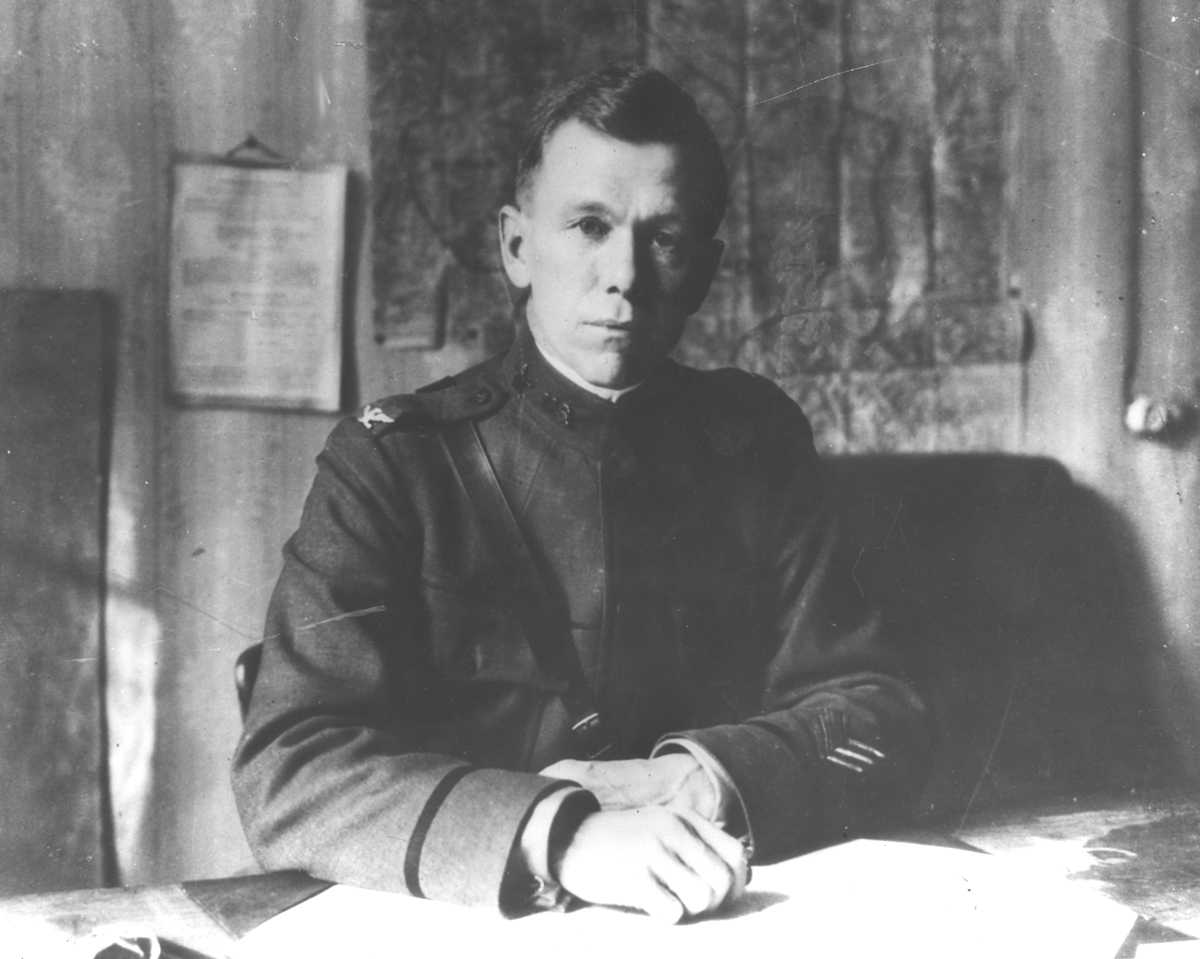
Col. George Marshall, France, 1918
Before finishing any plans for the Cantigny operation, Lt. Col. Marshall and several other officers wanted to see for themselves the land around the town Cantigny. “We had to start in the dark, and failed to find the guide who was to meet us at an agreed point. Directing our movements with a luminous compass, we worked our way forward but did not come in contact with any troops for some time. We were uncertain of our whereabouts, when we located a French soldier in a foxhole and learned that we were in the front line of the French division on the left of the First. This seriously delayed us and we did not locate the American troops on our left front line until shortly before dawn, which gave us little time to look over the ground before daylight” (p. 90).
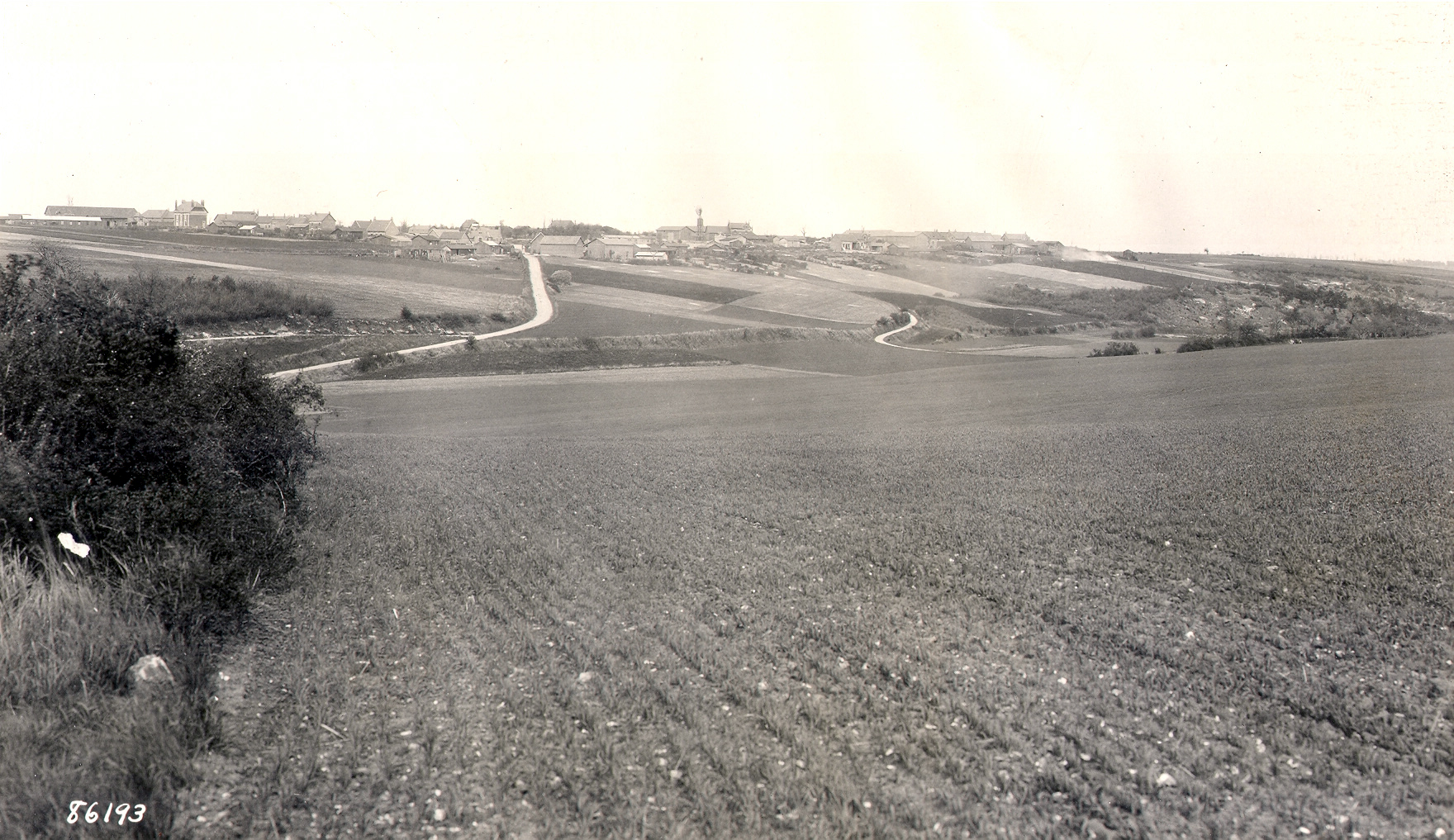
View across the grassy plain toward Cantigny
From a small wooded area referred to on the map as “Le Boquetaire,” which was in front of the town of Cantigny, “we studied the lay of the ground until shortly after dawn. A level grass plain extended between our position and the village; a little further to the south a ravine broke the level of the plain and extended around the southern portion of Cantigny”(p. 90).
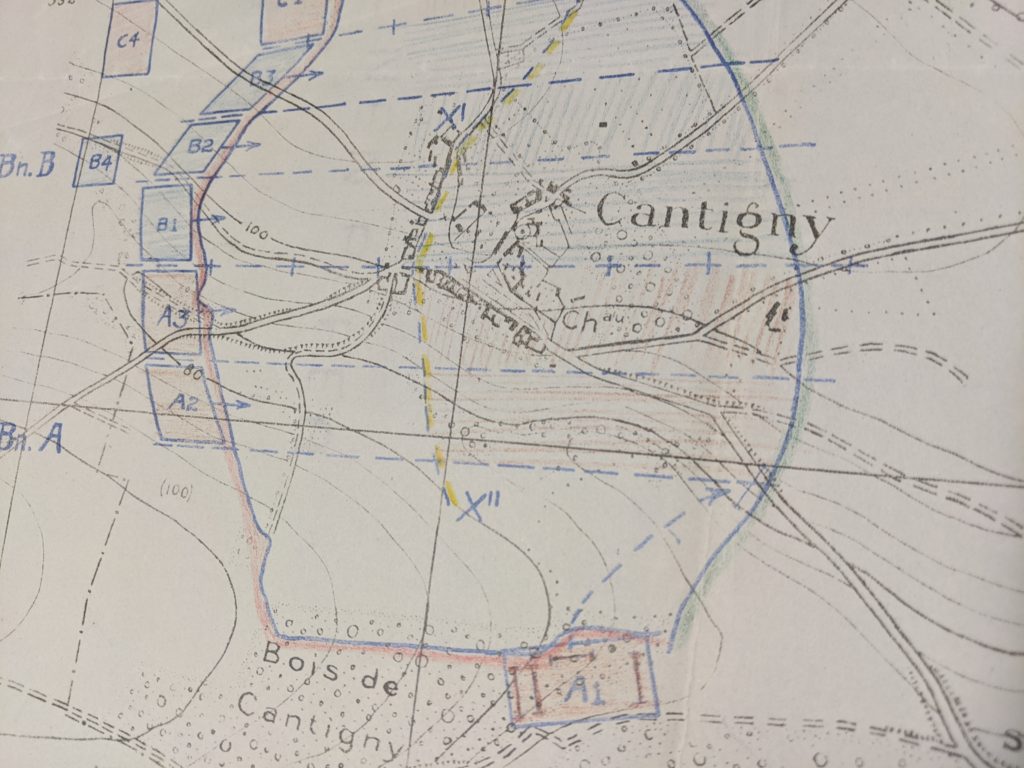
Map planning for the Battle at Cantigny
On May 26, while planning for the attack, Marshall was injured in an accident on a horse. He explains in his memoir that “my connection with the First Division came very near being terminated, at least temporarily. Coming up out of the Division Headquarters dugout on the late afternoon of the 26th, I got on my horse and started him at a canter up a trail leading from Division Headquarters. In my haste to get under way I had carelessly hurried the horse into a lope before I had adjusted myself in the saddle or straightened out the reins. He slipped, or stumbled, went down, and rolled over twice, my left ankle remaining in the stirrup and sustaining painful fracture. Crawling back on the horse, I returned to Headquarters and was carried down in the dugout. The doctor strapped up my foot with adhesive tape and I continued my participation in the affairs of the division with the injured foot resting on a table or a chair” (p 93). The foot caused Marshall a lot of pain, but he was still able to participate in the planning of the attack and counterattacks at Cantigny.
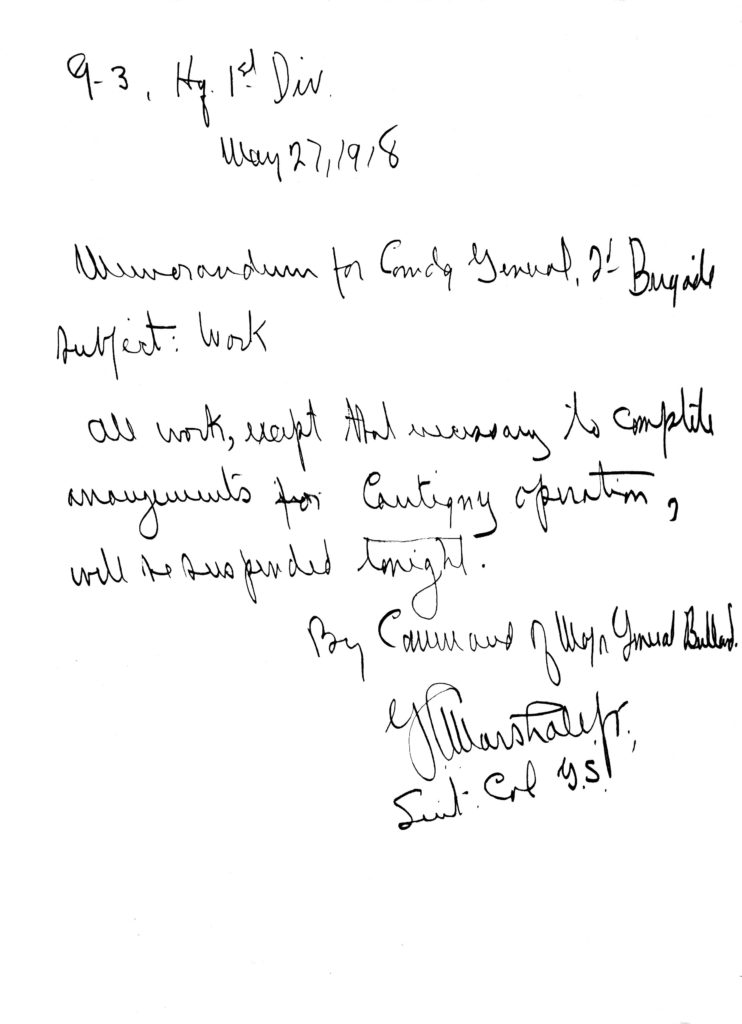
Note from Lt. Col. Marshall the day before the battle began.
After the attack and repelling the numerous counterattacks, Marshall reflected that “the heights of Cantigny were of no strategic importance, and of small tactical value. The issue was a moral one. This was our first offensive, which had been ordered primarily for the purpose of its effect on the morale of the English and French armies. For the First Division to lose its first objective was unthinkable and would have had a most depressing effect on the morale of our entire Army as well as on those of our Allies. For similar reasons, the Germans were determined to overthrow our first success and demonstrate to the world that the American soldier was of poorer stuff than the German” (p. 97).
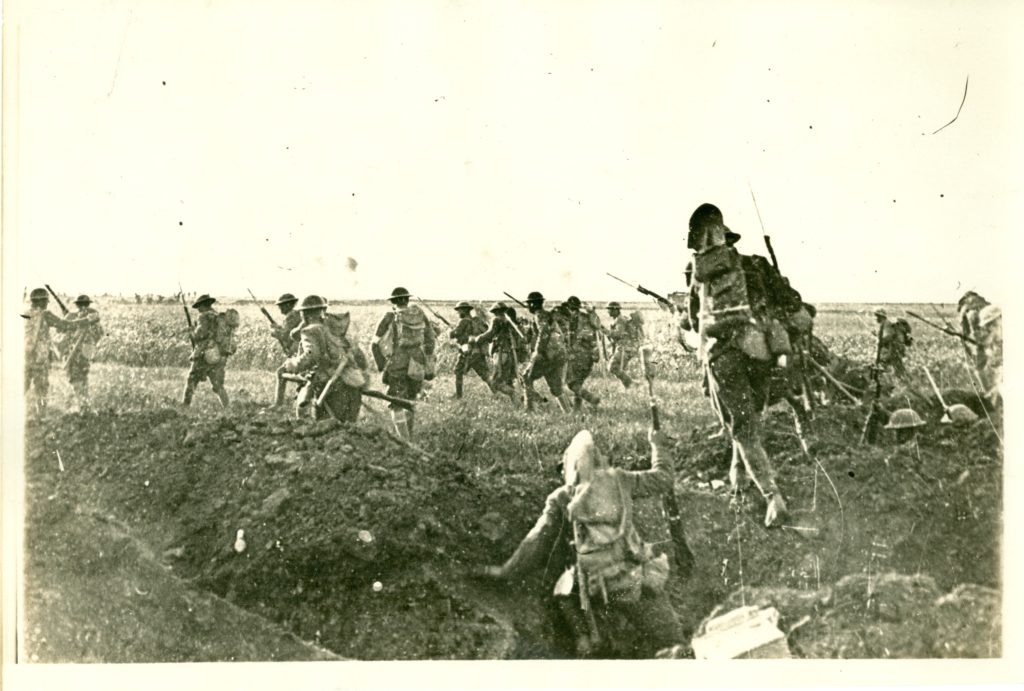
Soldiers leaving trenches, Battle of Cantigny
That the Americans had won at Cantigny was important but not highly trumpeted back home was also noted by Marshall. “We held Cantigny. The Germans never afterward reoccupied the village. The price paid was a heavy one but it demonstrated conclusively the fighting qualities and fortitude of the American soldier. Little has been heard or is known of this action. The enemy’s rush on Chateau-Thierry and the dramatic entrance of our troops at that point, at the psychological moment, naturally attracted the undivided attention of the public in America” (p. 99).
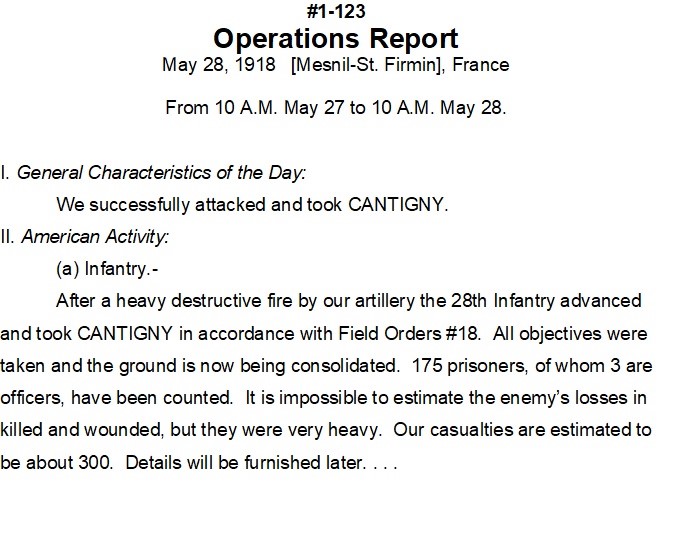
Operations report on the battle
Marshall also put this small, rather unknown battle into historical perspective: “This little village marks a cycle in the history of America. Quitting the soil of Europe to escape oppression and the loss of personal liberties, the early settlers in America laid the foundations of a government based on equality, personal liberty, and justice. Three hundred years later their descendants returned to Europe and on May 28, 1918, launched their first attack on the remaining force of autocracy to secure the same principles for the peoples of the Old World” (p. 99).
Resources for this blog include information from Memoirs of My Services in the World War 1917-1918 by George C. Marshall; the George C. Marshall papers; the Army Signal Corps photo collection; and the George C. Marshall photo collection. All items are held at the George C. Marshall Foundation in Lexington, VA.
